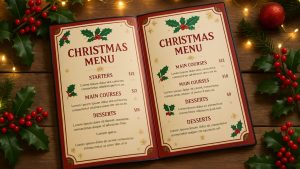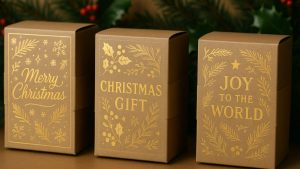
⏱️ Estimated reading time: 5 minutes
Small booklets have this unique charm – they’re compact, easy to handle, and pack a punch with their content. I often find that clients come to us wanting something more engaging than a simple leaflet but without the commitment of a thick book, and small booklets fit that sweet spot perfectly. They’re ideal for everything from menus and event programmes to mini product catalogues or informational guides.
Printing small booklets may seem straightforward at first glance, but as someone who’s been around the print industry for a while, I can say there’s more to it than meets the eye. From choosing the right size and paper stock to understanding binding options and the printing process itself—each choice influences the final quality and feel of your booklet.
Picking the Perfect Size and Format
The standard small booklet sizes tend to hover around A5 or even A6, but you can definitely go custom if you want something more unique. For example, an A6 booklet (105 x 148mm) is super handy as a pocket-sized guide or invitation, while A5 (148 x 210mm) gives you a bit more real estate for images and text without becoming bulky. Custom sizes are often requested for specific uses like event programmes or niche product guides – it’s worth asking your printer about options here.
Paper Choices: More Than Just Weight
When it comes to paper, I always advise thinking about the purpose and feel you want. For small booklets, a satin or silk finish is popular because it offers a nice balance between matte and gloss – colours look vibrant but there’s no harsh shine. Paper weight usually ranges between 115gsm to 170gsm for the internal pages, with covers often being a bit thicker, say 250gsm to 350gsm, for extra durability.
If sustainability is on your mind (and it should be!), recycled paper stocks are a fantastic option. They’ve come a long way and often have that natural, tactile feel which can add character to your booklet. Plus, it’s a great way to show your commitment to the environment without compromising on print quality.
Binding Matters: Stapled, Wiro, or Perfect Bound?
Binding might not be the first thing you think about, but it’s crucial for small booklets. The most common is saddle-stitched (stapled) binding, where staples run through the fold; it’s cost-effective and works well for booklets up to around 64 pages. For a bit more sophistication or thicker booklets, wiro binding (wire-o spiral) or perfect bound (like a paperback book) come into play.
Saddle stitching keeps the booklet lying pretty flat and is great for smaller page counts, while wiro bound booklets can open fully flat, which is handy for manuals or workbooks. Perfect bound booklets look sleek and professional but tend to be pricier and better suited for thicker booklets.
Printing Processes: Litho vs Digital
Here’s a bit of an insider tip: for small booklets, digital printing usually makes the most sense unless you’re ordering in bulk. Digital printing offers quick turnaround times and flexibility with smaller runs, and these days, the quality can be really impressive. The colours are sharp, and you can even personalise each booklet if you want.
Litho printing, on the other hand, shines when you need large quantities and consistent colour accuracy, especially for brand colours. It’s a bit more setup-heavy and less flexible for quick changes, but cost per unit tends to drop significantly for bigger print runs. So, if you’re planning a thousand or more copies, litho might be worth considering.
Design Tips for Small Booklets
Designing for small booklets is a bit like packing a suitcase—you want to fit everything you need without cramming it in. Make sure your font sizes are legible; tiny text can be a real pain to read. Also, consider white space carefully—it helps avoid that cluttered feel and guides the reader’s eye.
Images should be high resolution (at least 300dpi) to avoid any fuzziness when printed. And remember, the margins need to accommodate binding, so keep important text and visuals away from the spine area.
A Quick Case Example
We recently worked with a small local theatre company that wanted an A6 programme booklet for their seasonal plays. They chose a recycled 150gsm uncoated paper for the inside pages to give a natural feel, paired with a 300gsm satin cover for durability. The booklet was saddle-stitched, which gave it a neat, traditional finish.
Because they were printing just a few hundred copies, digital printing was the way to go, keeping costs down and turnaround fast. The design featured bold imagery and clear, legible text, which was essential since the booklet included cast info, schedules, and adverts from sponsors. The result was a compact, stylish booklet that audiences loved to take home.
Wrapping It Up
Small booklet printing is definitely a versatile and effective way to communicate, but it’s worth putting in some thought about size, paper, binding, and printing process to get the best outcome. Whether it’s a mini catalogue, a programme, or a handy guide, the right choices can make your booklet not just informative but a pleasure to hold and read.
At Newstyle Print, we’ve seen how these little booklets can leave a big impression when done right. So, next time you’re considering printed materials, think about the humble but mighty small booklet – it might just be the perfect fit for your needs.
Written by Taylor Reed
Print Expert at newstyleprint.co.uk. They share practical insights from hands-on print work across litho, digital and wide-format projects.
Updated on 4 November 2025
Ready to print? Contact Newstyle Print for a fast quote today.
Call 01572 771377 or email hello@newstyleprint.co.uk
Get a quote »





